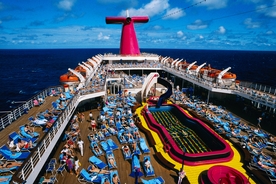Harrowing footage has once again surfaced on social media showing the final moments of a hijacked plane before it tragically crashed into the ocean.
The video begins innocuously, focusing on a man leisurely strolling along the beach, but swiftly transitions to the heart-stopping scene of the passenger plane's desperate attempt to land in the water.
The plane in the footage is Ethiopian Airlines Flight 961, which was en route from Addis Ababa, Ethiopia, to Nairobi, Kenya, on November 23, 1996.
Roughly 20 minutes post-takeoff, the flight was abruptly commandeered by three hijackers, plunging the aircraft's crew and passengers into an unthinkable nightmare. One of the men stood up from his seat and ran up the aisle to the cockpit, before being followed by two other hijackers.
While rushing to the cockpit one of the men said: "Everybody should be seated, I have a bomb!"
According to an incident report, the hijackers were wielding a fire axe and a fire extinguisher and demanded a course change to Australia.
Despite the pilot's efforts to reason with them - explaining the aircraft's insufficient fuel reserves for such a journey and proposing a refueling stop in Mombasa, Kenya - but the hijackers refused.
Tragically, as the tense standoff ensued and the aircraft's fuel supply eventually ran out - leading to a catastrophic crash into the Indian Ocean near the Comoros Islands.

Prior to the crash, the captain showed one of the hijackers a warning that fuel had depleted. The three hijackers then spoke with one another, giving the captain the opportunity to address the passengers.
He said: "Ladies and gentlemen this is your pilot, we have run out of fuel and we are losing one engine this time, and we are expecting crash landing and that is all I have to say. We have lost already one engine, and I ask all passengers to react ..... to the hijackers ...."
Before the captain could finish the announcement, one of the hijackers knocked the PA mic out of his hand.
After both engines failed, the captain was instructed by the hijackers not to touch the controls or they would kill him. To which, the captain replied: "I am already dead because I am flying an airplane without engine power."

Meanwhile, the First Officer - who had been kicked from the cockpit - worked with cabin crew members to help deflate any lifejackets that had already been inflated by passengers, as well as teaching people the brace position.
The impact shattered the plane upon contact with a reef, claiming the lives of 125 individuals, including six crew members and three hijackers, while leaving 38 passengers with severe injuries.
Remarkably, two passengers sustained minor injuries, and four emerged unscathed from the wreckage.
Despite the huge loss of life, the crash is actually looked back upon by experts as been partially successful, as the captain's heroic efforts resulted in some people surviving - the first of its kind in aviation history.
The official incident report read: "The Investigation Committee determines that the cause of this accident was unlawful interference by the hijackers which resulted in loss of engines thrust due to fuel exhaustion."
A memorial service was later held in Galawa on November 30, 1996, to honor the lives of those lost.












